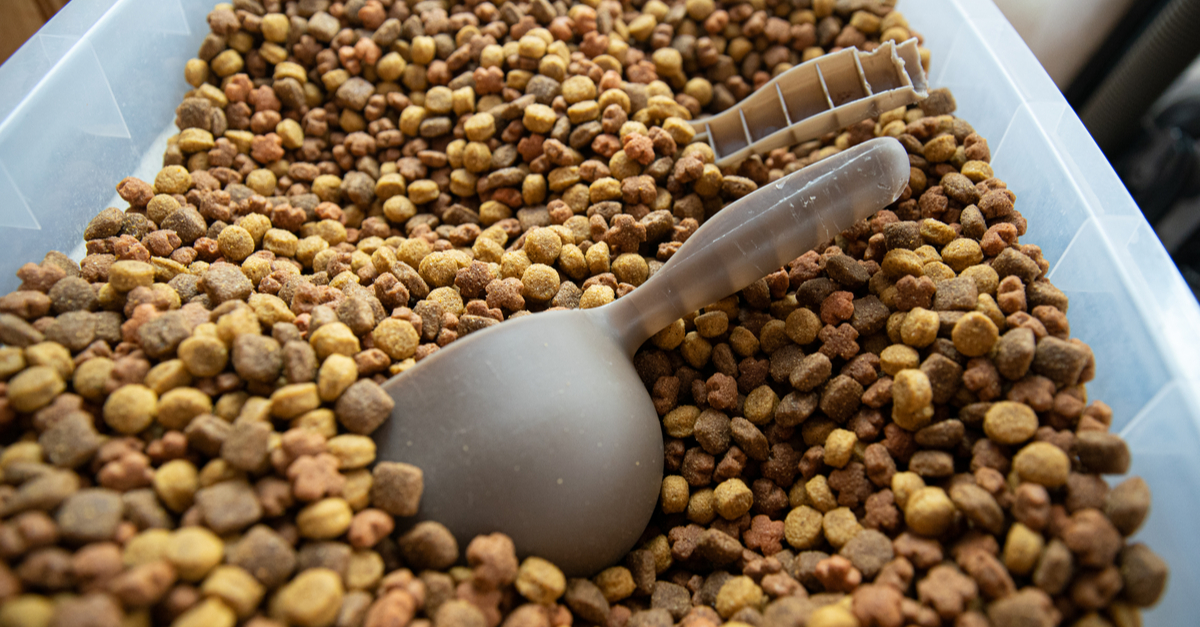
The vast majority of pet parents feed their dogs a dry food diet, commonly referred to as kibble. However, much misinformation exists about this inexpensive and convenient form of dog food. Let’s dive in to 7 facts many dog owners are surprised to learn about this popular food.
1. Kibble Contains Roughly 50% Carbohydrates
Many dog owners are surprised to learn that dogs have no biological requirement for carbohydrates. This is why when you look at the guaranteed analysis on the back of your dog’s food label, you won’t see carbohydrates listed. Despite this undisputed fact, carbs are still the most prominent ingredient in all kibbles, sometimes composing over 50% of the ingredients by weight. Why? Simply because grains and starches are cheap for manufacturers and often subsidized.
This is the very reason why kibble is so much lower cost compared to canned food or fresh food. There is no way around it, animal protein adds substantially to the cost. But let’s not forget, dogs are primarily carnivores!
To make matters worse, much of the protein found in kibble is from lower quality plant sources such as corn, wheat, peas, or soy. These plant sources are missing one or more amino acids that your dog’s body needs. A sign of low quality food is that you’ll often see amino acids such as L-Lysine, DL-methionine, L-threonine, L-tryptophan and taurine on the ingredient panel.
Think grain-free food is better? Think again! Many pet parents are shocked to learn that grain free foods can often contain more carbohydrates than grain based foods!
Related: Top 13 Dog Food Brands With No Recalls
2. Kibble Does NOT Clean Your Dog’s Teeth

A popular myth that has circulated for years is that somehow kibble cleans your dog’s teeth better than other foods. Nothing could be further from the truth!
Imagine if your dentist told you that all you needed to do to clean your teeth was eat cookies! Wouldn’t that be nice?
Sadly, its impossible for a food that contains roughly 50% carbohydrates to clean your dog’s teeth. The carbohydrates inside kibble are in fact the reason why your dog’s teeth need to be cleaned in the first place!
Related: Best Dog Foods of 2022
3. The Fats In Kibble Begin To Go Rancid After 4 Weeks Of Being Opened
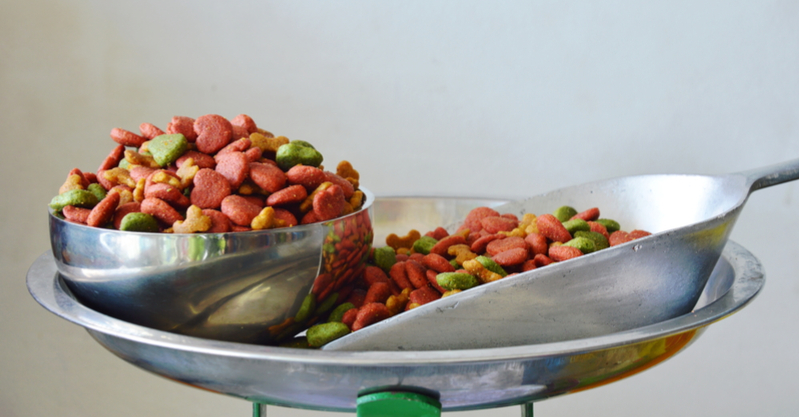
That huge bag of dog food you just bought to save money? Odds are, the fats inside it are going rancid within weeks of opening, putting your dog at risk. When fats in your dog’s food go bad, free radicals are created in the process. These free radicals can scavenge your dog’s body, causing untold damage over time.
Unfortunately dry food that has become rancid will not necessarily look or smell bad. But rest assured, the moment oxygen comes in contact with kibble, the process of oxidation has begun. Because of this, we like to recommend using the entire bag of food within 3-4 weeks. In general beef or lamb based foods go rancid slightly slower than chicken or poultry foods.
If you have a pet food storage container, its always better to put the entire pet food bag inside of the container, and not pour the kibble directly into the bin. Pet food packaging is actually pretty advanced these days and does a better job at keeping the food fresh than a storage bin alone.
4. “Made In The USA” Does Not Necessarily Mean “Made In The USA”

Sadly, its nearly impossible to find a dry dog food that contains 100% of ingredients sourced from the USA. It simply means that the final product was cooked and assembled in the USA.
This is due to the fact that China produces an overwhelming amount of the world’s vitamins, in the form of premixes. These vitamins are not sourced from nature, but rather created in a lab. While synthetic vitamins are sufficient to prevent most deficiencies, they do differ chemically from vitamins and minerals derived from nature and should not be a replacement for whole food sources. This is the reason so many dog owners add fresh or freeze dried food toppers over their dog’s kibble.
Related: The 14 Best Dog Food Toppers
5. Dogs Would Never Eat Kibble If It Weren’t For This Little Trick Food Manufacturers Use
Dogs are very flexible with their diets, adapting to whatever is available. However, their sharp incisor teeth prove that a dog’s ancestral diet was meant to consist of primarily meat. If that’s the case, why do dogs gobble down kibble which often contains less than 20% protein and more than 50% carbohydrates? Simple, manufacturers spray a flavor booster on the final product at the end of production. This flavor enhancer is usually some kind of animal fat and serves to make the product attractive to our dogs.
6. You Cannot Trust The Recommended Feeding Amount On The Bag

Let’s be real here: Would you trust McDonald’s recommendations on how much to eat their food? Of course not!
Pet food manufacturers can often recommend too much food for your individual dog’s needs. Recommending too much only plays in their favor as it leads you to buy more.
The recommendations on the bag are an ok starting place, but remember that based on your dog’s activity level, you may need to substantially modify the suggested servings.
Most importantly, learn to recognize a healthy weight and shape for your dog. Understanding the signs of obesity in your dog, and adjusting their diet accordingly, is absolutely vital to preventing obesity related diseases such as arthritis and cancer.
7. Meat Listed As The First Ingredient Does NOT Necessarily Mean The Food Is Good Quality
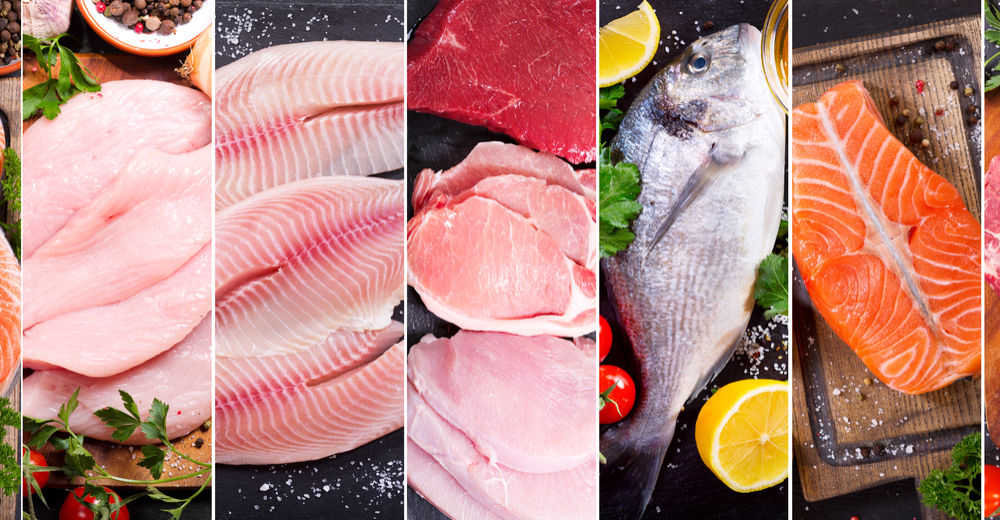
Manufacturers love to brag with the following claim: “real meat is our first ingredient!”
Here’s why that isn’t as big of a deal as you think. The ingredient list is always listed in the order of weight, prior to processing. Whole meat such as chicken breast contains roughly 70% water, which means that after the ingredient is cooked in the kibble manufacturing process, it often represents a tiny amount of the total protein, as low as 5%.
Odds are, the ‘meat meal’ listed later on in the list of ingredients represents more total protein than the first ingredient! Strange, but true.
5 Inexpensive Tips For Boosting The Nutrition Of Your Dog’s Kibble
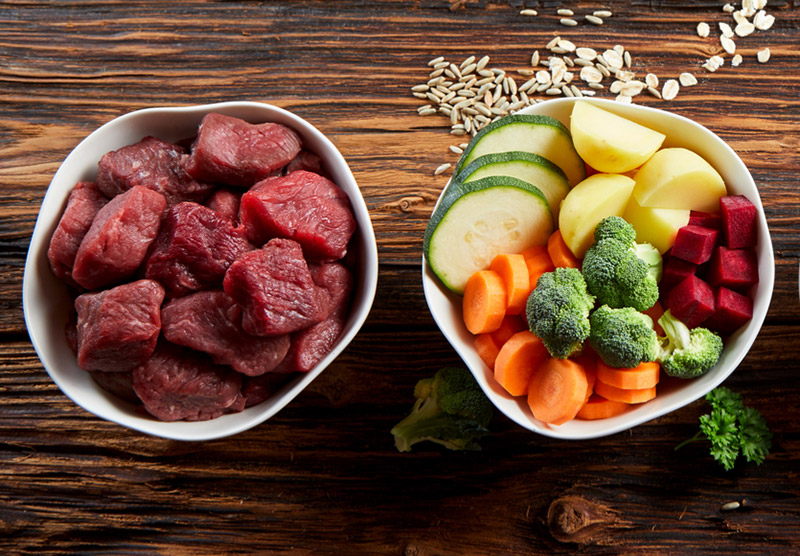
We understand why dry dog food exists, its inexpensive and very convenient! Kibble still plays a partial role in my dog’s diet for these reasons, but I seek to follow these guidelines as well:
- Rotate Your Kibble – Dog food companies don’t like this suggestion. They want you all to theirselves! But just like you rotate the foods and restaurants you eat from, your dog needs variety as well.
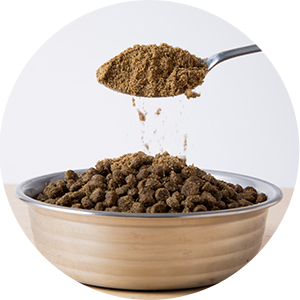
Freeze dried food toppers have become a popular way to supplement a dog’s kibble. - Add in fresh fruits and vegetables: While not absolutely essential for dogs, fresh fruits and vegetables contain valuable vitamins, minerals, and phytochemicals that can fight disease. Some of my favorites are green beans, carrots, and blueberries. If your dog won’t eat fruits and veggies, many pet owners have luck with a freeze dried food topper that contains them in the formula.
- Add in fresh protein – Raw eggs are my absolutely favorite add-in! Simply crack an egg over your dog’s existing food (remove a bit of kibble to watch those calories) then watch your pup go crazy! Freeze dried raw meat toppers are another great option.
- Rotate in some canned foods – Canned foods can be pricey, but they offer substantially more protein and hydration. They are often more palatable as well, so its a nice change of pace for your pup.
- Add in healthy fats not found in your dog’s food – Even if your dog food claims to contain Omega-3 fatty acids (which are absolutely essential for dogs) those healthy fats likely do not survive processing, and are present in extremely low amounts. Considering adding in krill oil (excellent for skin, coat, and allergies) and coconut oil (great for brain health).
If you’re concerned about your dog’s stomach being upset by any of these changes, make sure to start slow and add in a probiotic.
We hope these tips were helpful for you. Remember just like us, our dogs are what they eat. They rely on us to make healthy choices for them. Let’s give them the best, they deserve it!
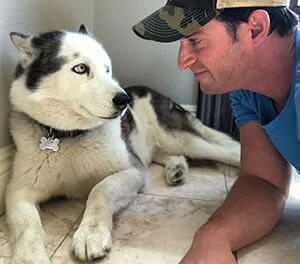
About The Author: Justin Palmer is the co-founder of iHeartDogs.com, a DNM certified pet food nutrition expert, and dog dad to Splash, a 14 year old rescued Siberian Husky.
These statements have not been evaluated by the Food and Drug Administration. This product is not intended to diagnose, treat, cure, or prevent any disease. The information on this website is not intended to replace a one-on-one relationship with a qualified healthcare professional.
 Toledo, United States.
Toledo, United States.